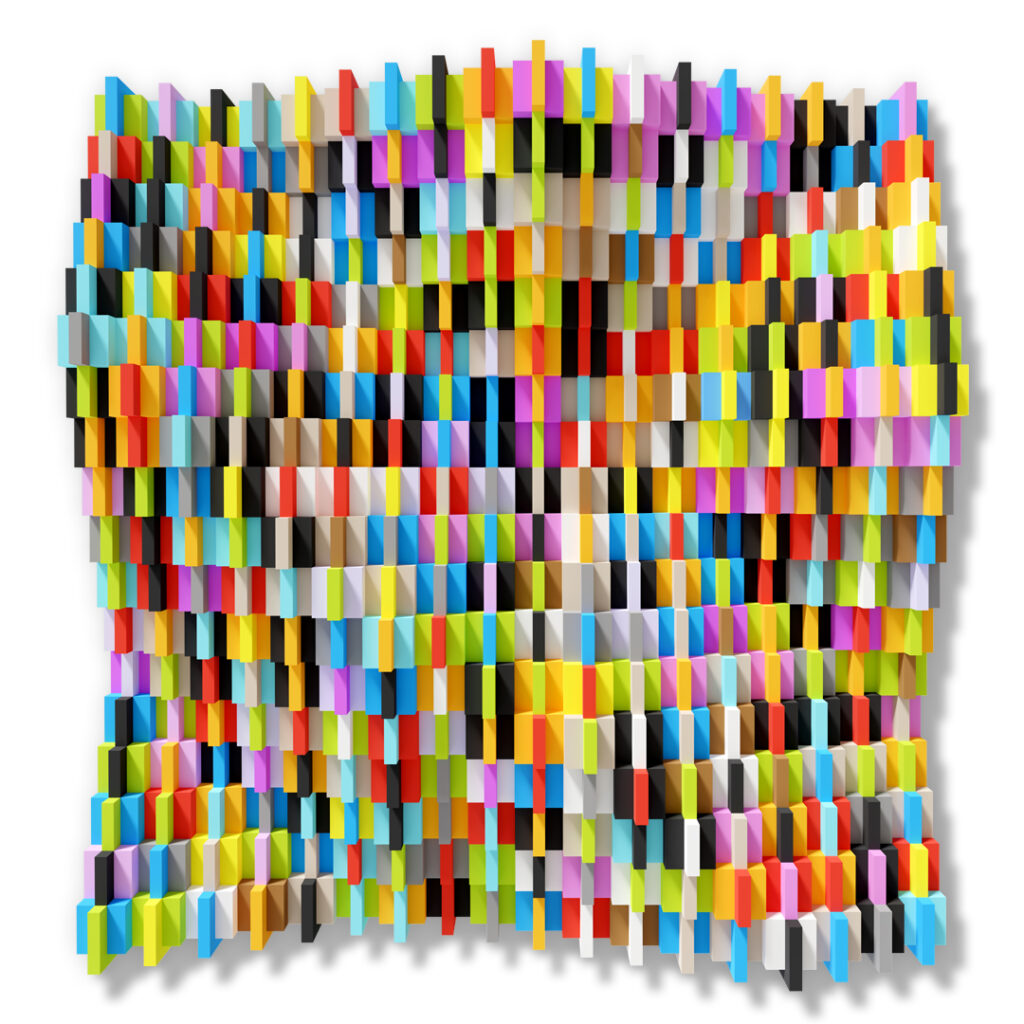I’m proud that my husband Andrew Reach is in this exhibition of abstract and geometric art with a group of nine terrific artists (including Andrew) in NE Ohio; Gianna Commito, David Louis Cintron, Mark Howard, Mark Keffer, Catherine Lentini, Natalie Lanese, Ed Raffel, and Susan Squires
From the Artists Archives website:
Tangents: Abstract and geometric Art in Northeast Ohio continues on in this tradition by gathering together a collection of diverse and prolific NEO artists who are choosing to work in a nonrepresentational way. While their various works include forays into: Color, optical interplay, mathematics, space, surface, texture, process, and the built environment, all explore their individual pursuits in geometry and abstraction.
Curator Jennifer Omaitz writes,” The idea for this exhibition grew out of a call to action. In the wake of the COVID 19 Pandemic most regional artworks appeared to explore literal pictorial space in painting and sculpture. Questions circulated about who in the area is making design dominant, non-representational work? Why is making abstract work still important? And how can the process of being an abstract artist lead to greater manifestations of perception? This exhibition aims to excite a deeper interest in geometric art and abstraction in the area and inspire more artists to open up their studio practice… The process of making abstract art occupies a rare space. It combines ways of thinking and making that interact with the temporal; sometimes abstraction is minimal and simplified, sometimes optical, and sometimes part of a collaged or combined language. It slows down or abandons the use of literal shapes and forms, often including ad hoc arrangement and disparate elements to engage the viewer in a space where philosophical questions prevail. The work has the power to share the pictorial space of color and surface with sensuality, metaphor, and resonance.”
Andrew writes about his work in the exhibition “I have two artworks in the exhibition; QUADRABAR I and PYRALUX IV. These pieces represent a new direction in my work, connecting my roots as an architect with my digital media practice by utilizing 3d modeling to create geometric abstraction. I call this process 3D Derivatives. The idea of an artist being derivative often has a negative connotation, as being imitative of another artist. But I’m using this word in a different context; that of something that is derived from a source, in this case the source being a 3d model. A 3d model can be viewed in many ways, orthographically and in perspective, from the top, bottom and sides, from different angles, rotated… etc. and a 3D model can be rendered with realistic shadows. These characteristics draw me into this process enabling me to expand on my geometric abstraction in ways not possible in 2D. Using the program Blender, I first create a 3d model, add color and study different camera views and lighting to cast shadows that emphasize the forms. I then export renderings to be printed on rigid substrates and cut them out on a router allowing the geometry to reveal its edges.”


QUADRABAR I, 2023
uv inkjet on acrylic/composite aluminum cut out on cnc router
dimensions variable – 47.5″h x 45.5″w overall, edition of 3
Andrew writes, “QUADRABAR I is a visualization in perspective looking directly overhead of a structure of a grid of cubes intersected by bars. They shift up in down, undulating in a wave like formation assembling an implied geographic terrain. Infused with 14 colors plus black and white, it comes alive as an optical tapestry in a symphony of color.”

PYRALUX IV, 2023
uv inkjet on acrylic/composite aluminum cut out on cnc router
dimensions variable – 47.5″ x 47.5″ overall, edition of 3
Andrew writes, “PYRALUX IV is a visualization in perspective looking directly overhead of a structure of 2 back to back square pyramids of stepped blocks color coded with primary colors plus white forming the platonic solid, the Octahedron. The stepped blocks along the edges of the octahedron are recessed, splitting the octahedron into 8 parts of which only 4 parts are visible in this view. The Octahedron’s vertices are color coded in black. A series of smaller blocks nest on the larger blocks increasing in size as they cascade down from the pinnacles.”
Andrew Reach was awarded the Ohio Arts Council’s Artists With Disabilities Access Program (ADAP) Grant for fiscal year 2024.

